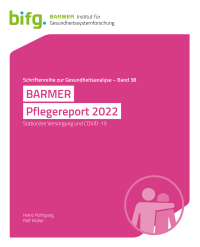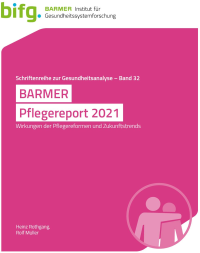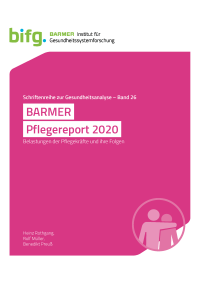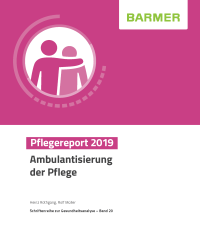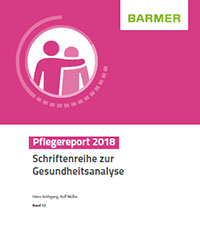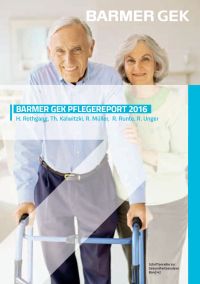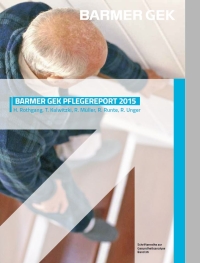
The BARMER Long-Term Care Report, which is published annually, assesses current long-term care policy and evaluates the long-term care situation. It also includes a focus chapter, which in this year’s Report the authors Prof. Heinz Rothgang and Dr. Rolf Müller (both SOCIUM) examine the duration of time that people are dependent on long-term care and how this affects long-term care costs.
Higher costs due to more staff and higher wages in long-term care
Last year, co-payments in nursing homes continued to rise and now amount to a national average of more than 2,300 euros – taking all long-term care insurance benefits into account. This is not least the result of staff increases due to a new standardized procedure developed by the University of Bremen for calculating staffing requirements, as well as the 2022 legislation on complying with collective bargaining agreements for nursing and support staff in long-term care. The latter stipulates that care facilities without a collective agreement introduce one, align wages as closely as possible to an existing one, or ensure a regionally customary wage level for nursing staff. This has led to a significant increase in wages in long-term care: Between December 2021 and December 2023, the wage level for skilled care workers and assistants rose by 17 and 24 percent, respectively, while the increase in nursing, as in the rest of the economy, was only six to twelve percent. The increased costs are thus the result of strategic measures to help improve long-term care in Germany. However, they must be compensated for by the legislature through an effective limitation of co-payments if the legitimacy of long-term care insurance – introduced in 1994 to prevent care-related impoverishment – is not to be damaged.
People are in need of long-term care for longer durations – care costs will continue to rise
This year’s focus chapter primarily looks at the increasing duration of care and the costs involved that can be expected for the long-term care system. A comparison of the data of people in need of care who died in 2022 with projections of the care durations for people who became care dependent in 2022, shows that a significant increase in the duration of care is to be expected. Of the BARMER insurees who died in 2022, 77 percent received long-term care insurance benefits in their lifetime, usually towards the end of their lives. These benefits were received for an average of 3.8 years. For those who became care dependent in 2022, the duration of care can be calculated in advance from cross-sectional data – using the same method used by the Federal Statistical Office to calculate the life expectancy of newborns. According to this, a care duration of 7.5 years is to be expected for people who became care dependent in 2022, i.e., almost twice as high as that of those who died in 2022.
The increased duration of care is also a consequence of the broadened definition of the need for long-term care, as people receive care services earlier and thus longer. Overall, the authors come to the conclusion that the duration of care increases by 100% and expenditure by 50%. Expenditure is rising less sharply, as the additional periods in need of care are mainly spent in lower care grades and with the receipt of attendance allowance, which entails significantly lower expenditure than care benefits in kind provided by outpatient care services or nursing home care.
Long-term financial security is essential for long-term care insurance
In addition to the increasing number of people in need of care due to demographic developments in the coming years and the rising costs due to more staff and higher wages, longer care durations must also be taken into account. These will even further increase the total expenditure of social long-term care insurance per person in new cohorts of care dependents. Long-term care insurance therefore needs significantly greater financial resources in the long run: “The recently initiated contribution increase by Federal Health Minister Karl Lauterbach can at most provide a short-term remedy and, at best, bridge the coming year. For long-term financial security, financing from tax revenues and financial equalization with private long-term care insurance are needed,” remarked Prof. Rothgang.
Contact:
Prof. Dr. Heinz Rothgang
SOCIUM Research Center on Inequality and Social Policy
Mary-Somerville-Straße 3
28359 Bremen
Phone: +49 421 218-58557
E-Mail: rothgang@uni-bremen.de
Dr. rer. pol. Rolf Müller
SOCIUM Research Center on Inequality and Social Policy
Mary-Somerville-Straße 3
28359 Bremen
Phone: +49 421 218-58554
E-Mail: rmint@uni-bremen.de




